 
|
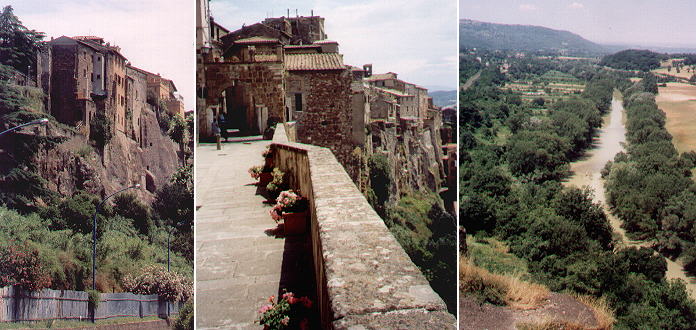 | ||
Orte is located a few miles north of the railway junction on an isolated tufa rock overlooking the Tiber, near the point where it is joined by the River Nera. Water from a large section of the Central Appenines mountain range flows into the Nera. So in a way also in the past Orte was known for being at a junction and the Romans built a bridge on the Tiber to facilitate trade between Rome and Umbria.
While the Danube is blue, the Tiber is blond (il biondo Tevere) as it carries in suspension minute particles of earth: during the Middle Ages, when the drainage systems put in place by the Romans collapsed, the floods deposited these particles on the lowest areas of the city covering wholly or in part houses and temples.
The history of Orte starts with the Etruscans who dug the caves one can still see on the sides of the rock and used them as cemeteries.
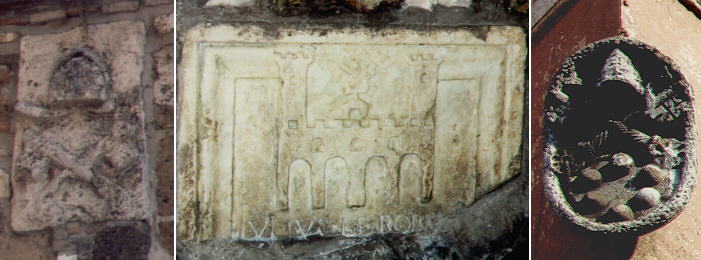 | ||
The symbol of Orte is the bridge built by the Romans (almost entirely collapsed in the XVIth century). The relief in the picture above shows it with the two towers which protected it. Orte was one of the first possessions of the pope: a gift of the Longobard kings in the VIIIth century when Rome was still a Byzantine duchy, but the popes were starting to build the Patrimonium Petri (St. Peter's patrimony) the initial name of the papal state.
In December 1527 Clemens VII escaped from Castel Sant'Angelo and sought refuge in Orvieto, a few miles north of Orte. The coat of arms of Clemens VII on the town hall of Orte is a recognition of its loyalty to the pope.
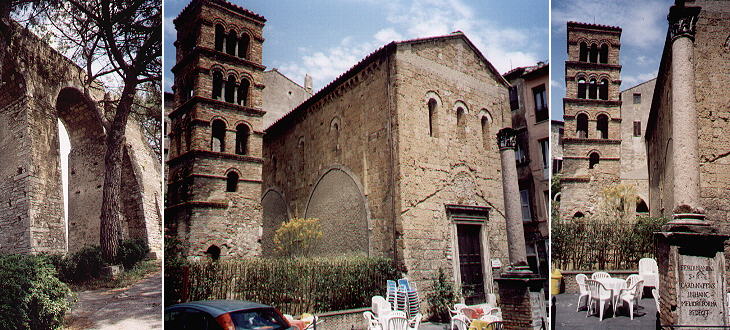 | ||
The imposing ruins of a Roman aqueduct are a sign of the importance of the town in ancient times: Orte remained important through the Middle Ages and it retains a very interesting medieval church with a slightly leaning bell tower.
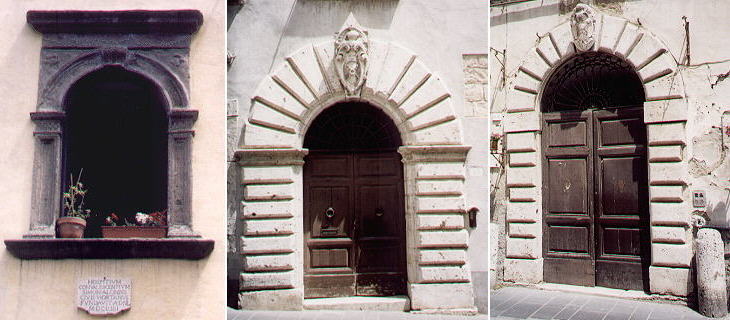 | ||
Five Renaissance palaces of Orte show the same coat of arms. It belongs to a Florentine family of merchants and bankers, the Alberti: helped by Leo X and Clemens VII, both from Florence they opened a branch of their business in Orte and over time they built five residences, all showing a simple and neat design, typical of Florentine architecture.
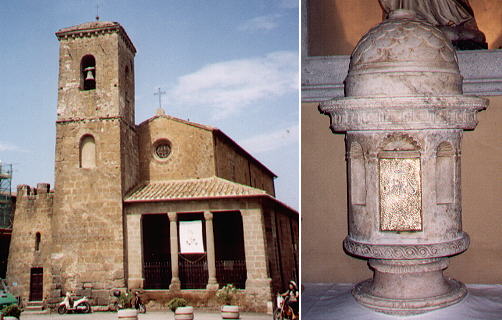 | ||
Vasanello is a small town, five miles south of Orte, on the road leading to Vignanello and Soriano, with some interesting monuments of its past.
S. Maria has the appearance of a church on its right side and of a small fortress on its left side: a sort of attempt to kill two birds with one stone. The church, in addition to some Roman reliefs and inscriptions, has a fine Renaissance font, shaped as a small temple.
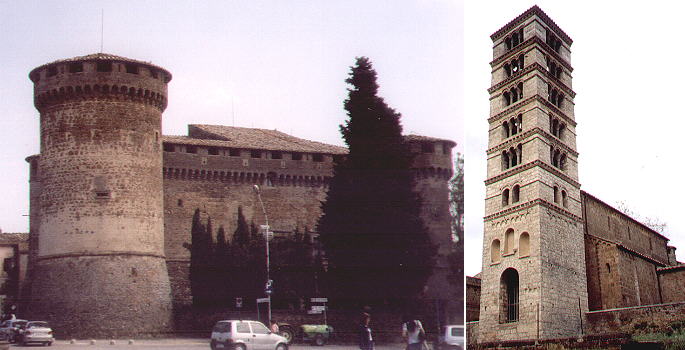 | ||
The defence of Vasanello could not be assured by the small fortication next to S. Maria, so the families who ruled over the town (Orsini, Della Rovere and Colonna) built a small fortress at its entrance. It dates back to the XIIth century, but it was largely modified in the XVIth century.
Vasanello was located along a Roman road (Via Amerina) leading through Orte to Umbria. It was with the white stones of that road that the inhabitants of Vasanello erected a very high bell tower which most likely served as watch tower, because Vasanello, unlike the other towns of the area, is not located on a high tufa rock.
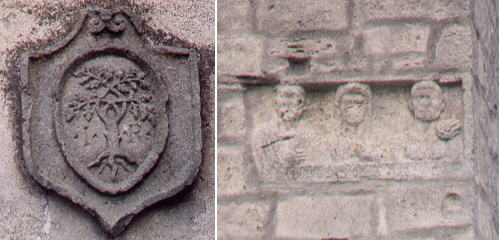 | ||
In and about Viterbo - other pages:
Viterbo
Bagnaia
Bagnoregio
Bomarzo
S. Maria della Querce
S. Martino al Cimino
Tuscania
Vitorchiano
Walks with Ferdinand Gregorovius in the Roman countryside
some other walks:
A walk to Porta Furba
Via Appia Antica from Cecilia Metella to Torre in Selci
Via Appia Antica from Torre in Selci to Frattocchie
See my Home Page on Baroque Rome or my Home Page on Rome in the footsteps of an XVIIIth century traveller
All images © 1999 - 2004 by Roberto Piperno. Write to romapip@quipo.it
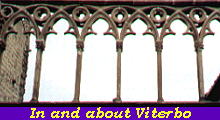 Orte and Vasanello
Orte and Vasanello